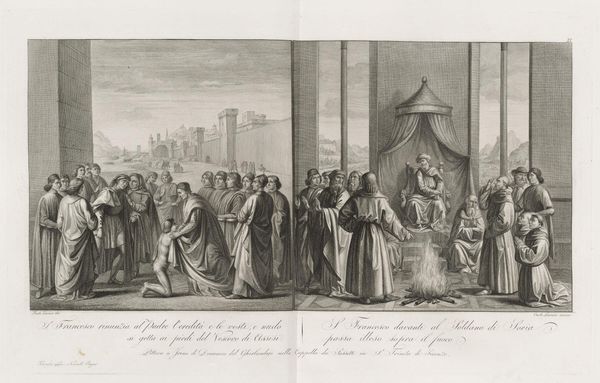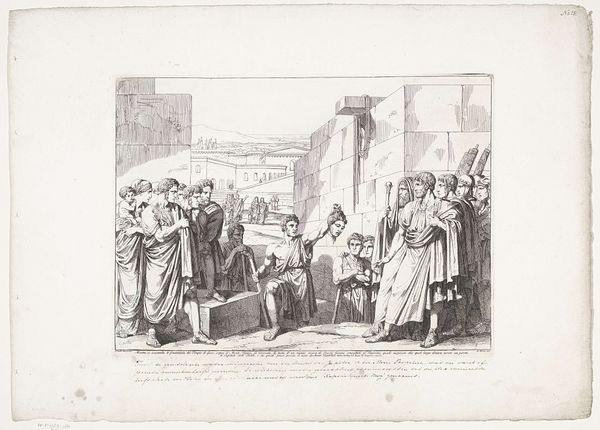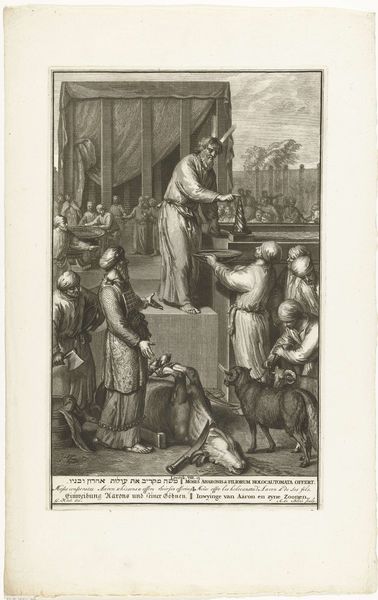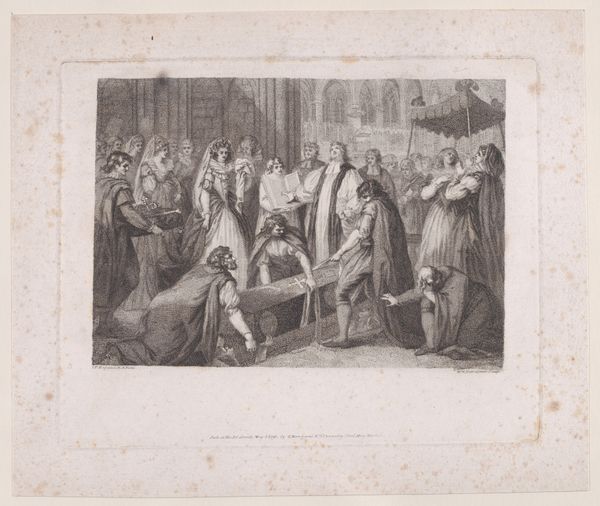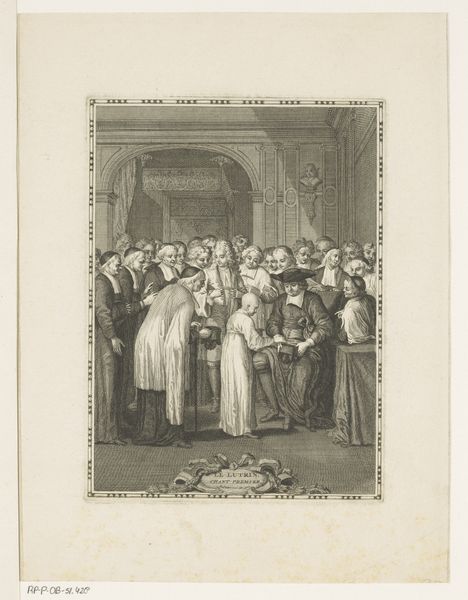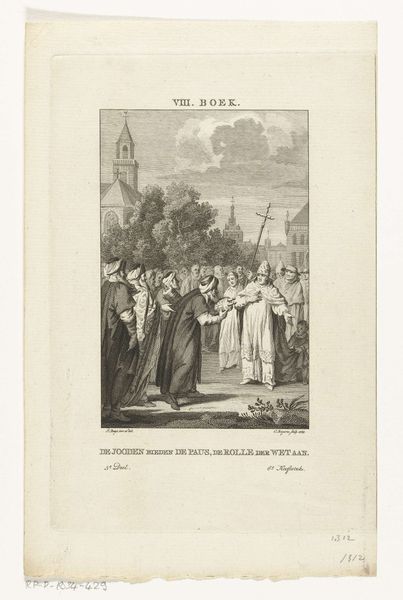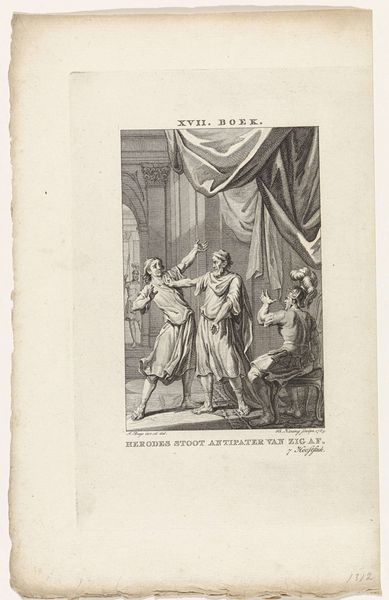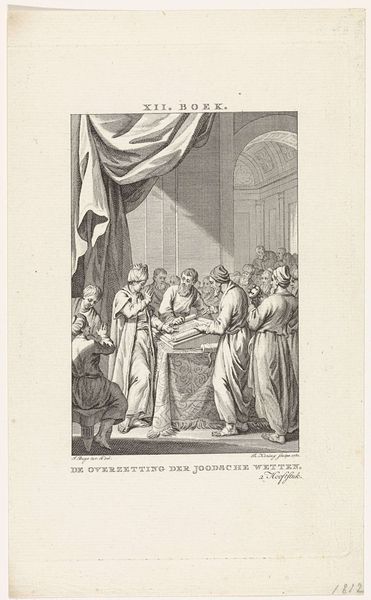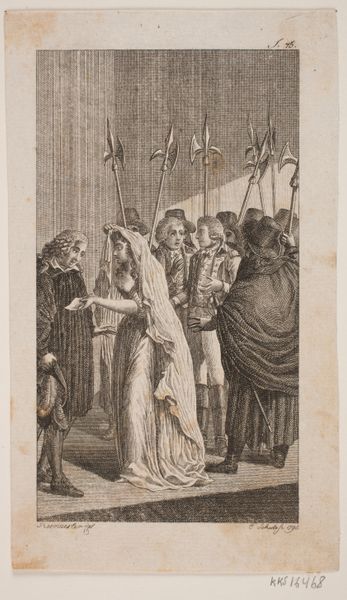
print, engraving
#
baroque
# print
#
old engraving style
#
figuration
#
historical photography
#
history-painting
#
engraving
Dimensions: height 116 mm, width 80 mm
Copyright: Rijks Museum: Open Domain
Editor: Here we have "Procession to the Church, 6," an engraving created sometime between 1639 and 1699. It resides in the Rijksmuseum. What strikes you first about it? Curator: The density of the lines! The engraving technique here results in incredible detail and texture, particularly in the robes of the figures and the architectural rendering of the buildings. The sharp contrast really grabs your attention, doesn’t it? Editor: Absolutely. You immediately notice the labor involved—each tiny etched line contributed to building depth and texture. And beyond the making, I wonder what the materiality of the scene signifies to contemporary viewers? Those elaborate robes worn during the procession indicate religious power, prestige, and access to costly textiles, speaking volumes about social hierarchy. Curator: Good point. The composition uses that contrast very strategically. Look at how the figures are placed, with darker forms foregrounded against a lighter background. It leads the eye along the procession towards the church. There's almost a theatrical quality in the presentation of the scene and the contrast that reminds us of the Baroque's dramatic flair. Editor: That’s Baroque style showing off the era’s craftsmanship, alright. This wasn’t a quick sketch, it required planning and skilled execution. The text below indicates it was meant to illustrate some sort of procession to the altar. Do you find that influences how you engage with the scene depicted here? Curator: Knowing that, I think the rhythm established through the repetitive vertical lines—the figures, the architecture in the back, the torches carried—enhances the ritualistic feel. Each element carefully contributes to the sacred nature of the act. Editor: Considering that procession as labor—the physical movement of bodies, the resources used for garments and torches, all focused toward religious performance—shifts it away from the purely spiritual. This adds depth and reminds us of how intertwined faith and power were in historical society. Curator: Indeed. Seeing it that way broadens our understanding. It is incredible how formal elements create such a strong symbolic narrative. Editor: Agreed, by recognizing the effort and the context around this print, the engraving prompts interesting considerations of Baroque society's values and class structure, right?
Comments
No comments
Be the first to comment and join the conversation on the ultimate creative platform.


